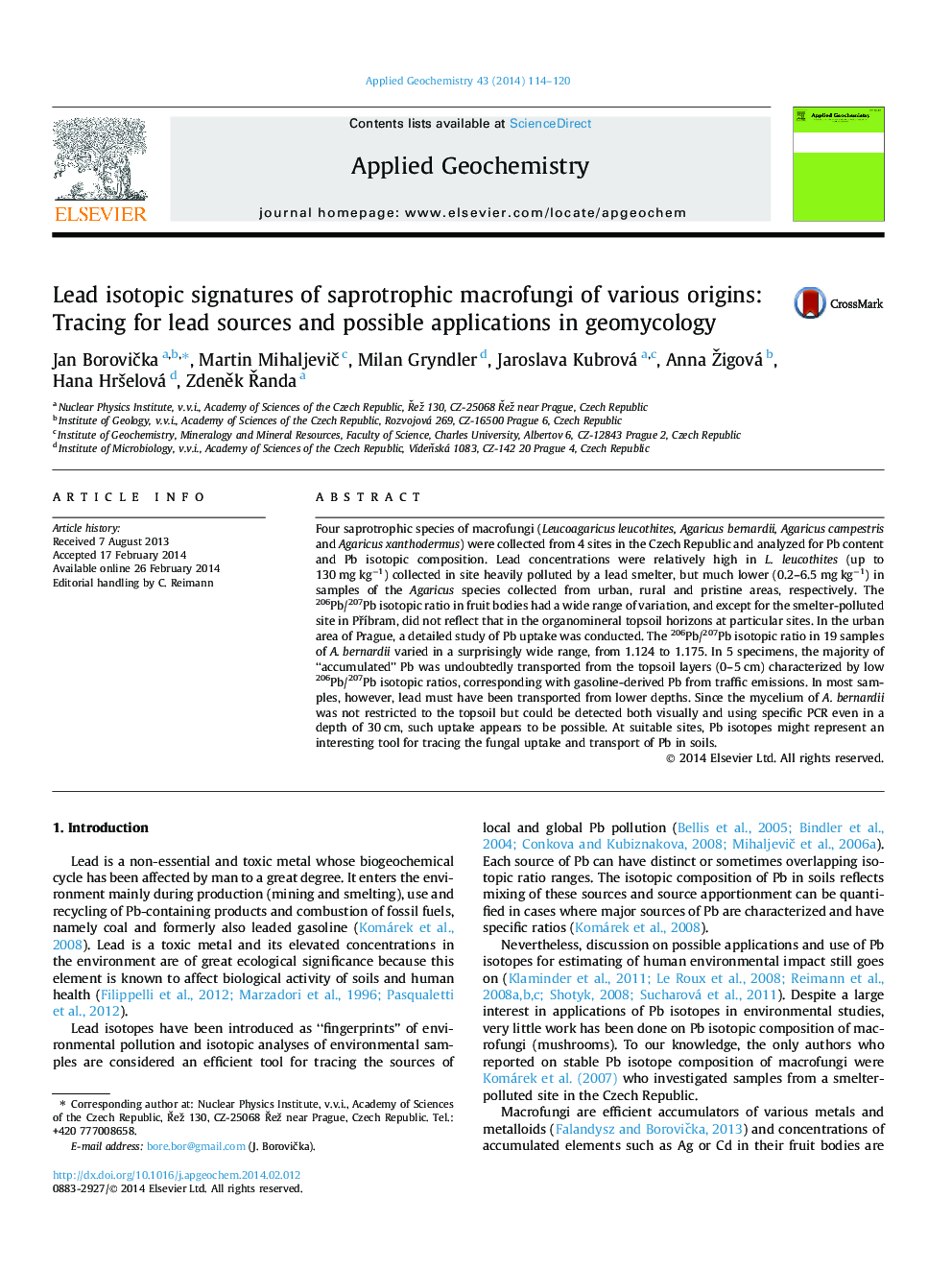| Article ID | Journal | Published Year | Pages | File Type |
|---|---|---|---|---|
| 4435824 | Applied Geochemistry | 2014 | 7 Pages |
•Pb isotopic composition of saprotrophic macrofungi does not reflect that of topsoils.•206Pb/207Pb ratio was a useful indicator for tracking soil-derived Pb in A. bernardii.•Pb isotopes have potential as tracers of fungal uptake of metals in soils.
Four saprotrophic species of macrofungi (Leucoagaricus leucothites, Agaricus bernardii,Agaricuscampestris and Agaricusxanthodermus) were collected from 4 sites in the Czech Republic and analyzed for Pb content and Pb isotopic composition. Lead concentrations were relatively high in L. leucothites (up to 130 mg kg−1) collected in site heavily polluted by a lead smelter, but much lower (0.2–6.5 mg kg−1) in samples of the Agaricus species collected from urban, rural and pristine areas, respectively. The 206Pb/207Pb isotopic ratio in fruit bodies had a wide range of variation, and except for the smelter-polluted site in Příbram, did not reflect that in the organomineral topsoil horizons at particular sites. In the urban area of Prague, a detailed study of Pb uptake was conducted. The 206Pb/207Pb isotopic ratio in 19 samples of A. bernardii varied in a surprisingly wide range, from 1.124 to 1.175. In 5 specimens, the majority of “accumulated” Pb was undoubtedly transported from the topsoil layers (0–5 cm) characterized by low 206Pb/207Pb isotopic ratios, corresponding with gasoline-derived Pb from traffic emissions. In most samples, however, lead must have been transported from lower depths. Since the mycelium of A. bernardii was not restricted to the topsoil but could be detected both visually and using specific PCR even in a depth of 30 cm, such uptake appears to be possible. At suitable sites, Pb isotopes might represent an interesting tool for tracing the fungal uptake and transport of Pb in soils.
